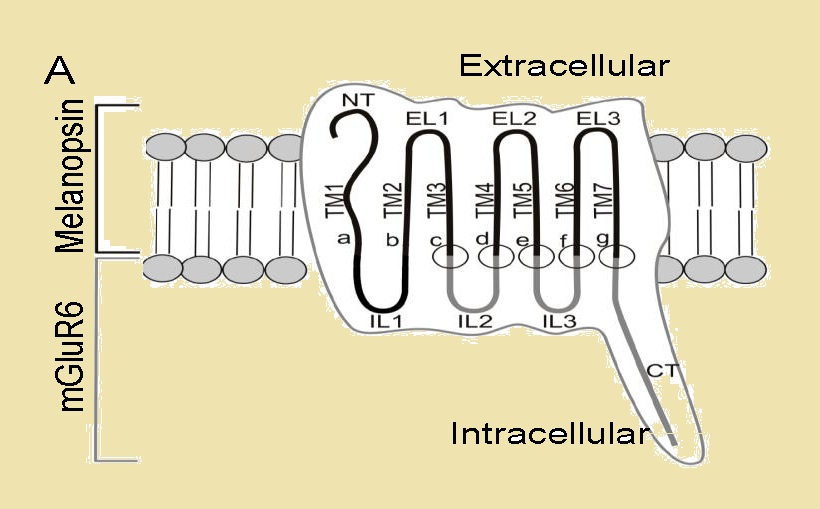Restoring vision with a new optogenetic tool

Millions of people worldwide suffer from progressive degeneration of the eye’s photoreceptors (the light-sensing cells), leading ultimately to blindness. A recent therapeutic approach for restoring vision in blind retinas involves introducing light-sensing proteins into surviving retinal cells that normally cannot sense light, turning them into “replacement photoreceptors”. This so-called “optogenetic” method, however, has several limitations, because traditional light-sensitive proteins require extremely high light intensities, which can be harmful, and use a mechanism alien to the cells.
In a new PLOS Biology paper, Michiel van Wyk, Sonja Kleinlogel and their colleagues bring this promising technology closer to medical application by engineering a new light-sensing protein that is compatible with the cells’ own signalling mechanism but retains all the advantages of traditional optogenetic proteins: fast responsiveness and resistance to light damage (“bleaching”).

This new protein, termed Opto-mGluR6, is a chimeric protein that consists of two “local” retinal proteins: the light-sensing domains of the retinal photopigment melanopsin and the signaling domain of the metabotropic glutamate receptor 6 (mGluR6). mGluR6 is a protein found in retinal ON-bipolar cells that is naturally activated by the neurotransmitter glutamate released from the photoreceptors, thereby amplifying the incoming signal.
Because ON-bipolar cells naturally receive direct input from the photoreceptors, turning the native chemically activated receptor mGluR6 into a light-activated receptor means that signaling mechanisms in the ON-bipolar cells are preserved, conferring high light-sensitivity and fast “normal” responsiveness. And using the extracellular domain of melanopsin as a “light antenna” provides resistance to bleaching: No matter how hard the protein is hit by light, the response of Opto-mGluR6 never attenuates.
To demonstrate the therapeutic potential of this new tool, the authors show that mice suffering from retinitis pigmentosa – a genetic form of retinal degeneration characterized by night blindness and progressive loss of peripheral vision – can be treated to regain daylight vision.
This new optogenetic approach could potentially be applied to the treatment of any kind of photoreceptor degeneration, including age-related macular degeneration. Plus, the engineering of the bleach-resistant chimeric Opto-mGluR6 opens up broader possibilities for the treatment of other conditions: The mGluR6 receptor belongs to a large family of diverse signaling proteins called G-protein-coupled transmembrane receptors, which are implicated in a wide range of human disorders and are consequently prime targets for biomedical research and pharmaceutical interventions.

[…] As Stavroula Kousta explains for the PLOS blogs: […]
[…] Bild från charnsitr via Shutterstock Källa: ScienceAlert, ScienceDaily, PLOS […]
[…] PLOS Biologue, 7 May 2015 […]
[…] Bild från charnsitr via Shutterstock Källa: ScienceAlert, ScienceDaily, PLOS […]